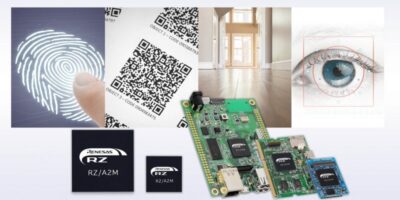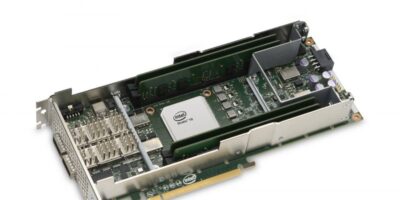Two bi-directional four-switch synchronous buck-boost controllers from Renesas are believed to be the industry’s only true bi-directional controllers that sense peak current at both ends and provide cycle-by-cycle current limit in both directions while in buck or boost mode.
The ISL81601 and ISL81401 controllers generate point-of-load (PoL) and voltage rail conversions with peak efficiency up to 99 per cent. The ISL81601 has an input range of 4.5 to 60V and produces a 0.8 to 60V output to support most industrial batteries, namely 12, 24, 36 and 48V.
The ISL81401 is a 4.5 to 40V input and 0.8 to 40V output version, and its unidirectional counterpart is the ISL81401A. The controllers are suitable for DC power back-up and battery-powered medical, industrial and telecommunications systems.
According to Renesas, the ISL81601 and ISL81401’s bidirectional peak current sensing capability eliminates complex external circuitry required for charging and discharging a battery to supply power to the loads. A proprietary algorithm provides smooth mode transitions between buck, boost and buck-boost, while reducing low frequency ripple at Vout, ensuring minimal disturbances during line or load transients. The algorithm also ensures predictable ripple voltage under all conditions. Multi-layer overcurrent protection and a precision control algorithm deliver constant current down to 0.1V at Vout for reliable operation. Designers can expand system power by paralleling an unlimited number of controllers, says Renesas. The ISL81601 and ISL81401 operate two switches at a time to minimise power loss and achieve higher efficiency.
“Our new bidirectional buck-boost controllers eliminate extra sensing circuitry and offer customers a robust feature-set that maintains battery health and superior power utilization,” said Philip Chesley, Vice President of Industrial Analog and Power Business Division, Renesas Electronics Corporation. “Leveraging Renesas’ proprietary modulation scheme and algorithms allows the highly integrated ISL81601, ISL81401 and ISL81401A to achieve the high reliability performance required for battery-powered equipment.”
The ISL81601 and ISL81401/A can be combined with a Renesas RL78 microcontroller (MCU), or other MCUs, to program the voltages, battery charge/discharge function, and on-the-fly bidirectional power flow. Designers can also use the PowerCompass tool to help them quickly identify other power supply parts that match their specific system requirements. Multiple power rails can be set up and designers can perform high-level system analysis and generate custom reference design files in minutes.
All three controllers and evaluation boards are available now. The ISL81601 bidirectional 60V synchronous buck-boost controller is available in a 38-lead HTSSOP package and a 32-lead QFN package. The ISL81401 bi-directional and ISL81401A uni-directional synchronous 40V buck-boost controllers are available in 32-lead QFN packages.







